The following code is an example which writing by go, and it saves one of the resources to a bitmap file.
// Step:
// get HICON
// get ICONINFO from HICON
// get Bitmap from ICONINFO
// save Bitmap to a File
// Note: To make the example look simple, I ignore all possible errors handling.
func Example_saveFileIconAsBitmap() {
user32dll := w32.NewUser32DLL()
kernel32dll := w32.NewKernel32DLL()
gdi32dll := w32.NewGdi32DLL()
var hIcon w32.HICON
{
// Because I already know the iconID(myResourceID) I want, I can load it directly.
// If you want to find the appropriate iconID after searching through RT_GROUP_ICON you can refer to this example:
// https://github.com/CarsonSlovoka/go-pkg/blob/34e5d2c1fc97bf149bf626acaaf8773fe1509d64/v2/w32/kernel32_func_test.go#L331-L353
hmExe := kernel32dll.LoadLibrary("./testdata/exe/writeWithFont.exe") // writeWithFont.exe is in here: https://github.com/CarsonSlovoka/go-pkg/tree/983a2c1/v2/w32/testdata/exe
myResourceID := uintptr(1) // You can use resourceHacker.exe to help you find the ID.
hRes, _ := kernel32dll.FindResource(hmExe,
w32.MakeIntResource(myResourceID),
w32.MakeIntResource(w32.RT_ICON),
)
hMem, _ := kernel32dll.LoadResource(hmExe, hRes)
lpResource := kernel32dll.LockResource(hMem)
hIcon = user32dll.CreateIconFromResourceEx(lpResource,
kernel32dll.MustSizeofResource(hmExe, hRes), true, 0x00030000,
32, 32, // size X, Y
w32.LR_DEFAULTCOLOR,
)
}
var iInfo w32.ICONINFO
{
if !user32dll.GetIconInfo(hIcon, &iInfo) {
return
}
// Remember to release when you are not using the HBITMAP.
defer func() {
_ = gdi32dll.DeleteObject(w32.HGDIOBJ(iInfo.HbmColor))
_ = gdi32dll.DeleteObject(w32.HGDIOBJ(iInfo.HbmMask))
}()
}
bmp := w32.Bitmap{}
{
// Create BITMAP by ICONINFO
gdi32dll.GetObject(w32.HANDLE(iInfo.HbmColor), int32(unsafe.Sizeof(bmp)), uintptr(unsafe.Pointer(&bmp)))
}
// Save Bitmap to a file.
var (
bitmapFileHeader w32.BitmapFileHeader // https://en.wikipedia.org/wiki/BMP_file_format#Bitmap_file_header
bitmapInfoHeader w32.BitmapInfoHeader // https://en.wikipedia.org/wiki/BMP_file_format#DIB_header_(bitmap_information_header)
)
{
bitmapInfoHeader = w32.BitmapInfoHeader{
Size: uint32(unsafe.Sizeof(bitmapInfoHeader)), // 40
Width: bmp.Width, Height: bmp.Height,
Planes: 1,
BitCount: 32,
Compression: w32.BI_RGB,
}
bmpSize := ((bmp.Width*int32(bitmapInfoHeader.BitCount) + 31) / 32) * 4 /* uint32 */ * bmp.Height // see the wiki: https://en.wikipedia.org/wiki/BMP_file_format#Pixel_storage
sizeofDIB := 14 + uint32(unsafe.Sizeof(bitmapInfoHeader)) + uint32(bmpSize)
bitmapFileHeader = w32.BitmapFileHeader{
Type: 0x4D42, // BM. // B: 42, M: 4D // All of the integer values are stored in little-endian format
Size: sizeofDIB, // HEADER + INFO + DATA
OffsetBits: 14 + uint32(unsafe.Sizeof(bitmapInfoHeader)),
}
hdc := user32dll.GetDC(0)
var lpBitmap w32.LPVOID
hDIB, _ := kernel32dll.GlobalAlloc(w32.GHND, w32.SIZE_T(bmpSize))
lpBitmap, _ = kernel32dll.GlobalLock(hDIB)
defer func() {
kernel32dll.GlobalUnlock(hDIB)
kernel32dll.GlobalFree(hDIB)
}()
gdi32dll.GetDIBits(
hdc, iInfo.HbmColor,
0,
w32.UINT(bmp.Height),
lpBitmap, // [out]
&w32.BitmapInfo{Header: bitmapInfoHeader},
w32.DIB_RGB_COLORS,
)
outputBmpPath := "testdata/temp001.bmp"
// Write: FileHeader, DIPHeader, bitmapData
{
f, _ := os.Create(outputBmpPath)
defer func() {
_ = os.Remove(outputBmpPath) // Remove test data. If you want to see the result, delete this line to see the final data.
}()
// FileHeader
_ = binary.Write(f, binary.LittleEndian, bitmapFileHeader)
// DIP Header
_ = binary.Write(f, binary.LittleEndian, bitmapInfoHeader)
// bitmapData
bmpDatas := make([]byte, sizeofDIB)
var offset uint32 = 0
for offset = 0; offset < sizeofDIB; offset += 1 {
curByteAddr := unsafe.Pointer(uintptr(lpBitmap) + uintptr(offset))
bmpDatas[offset] = *(*byte)(curByteAddr)
}
_ = binary.Write(f, binary.LittleEndian, bmpDatas)
_ = f.Close()
}
}
// Output:
}
Above code is part of a third-party library, but no other third-party resources are used.
It is no longer written as a single file because winapi has too many constants, variables, and types, and the declaration of the DLL is also very tedious.
If you are interested, you can download this library back. Its packaging is very simple. If you do not like to use other third parties to capture the relevant variables can be done.
The following pictures will help you understand the meaning of the parameters of MAKEINTRESOURCE more easily.

